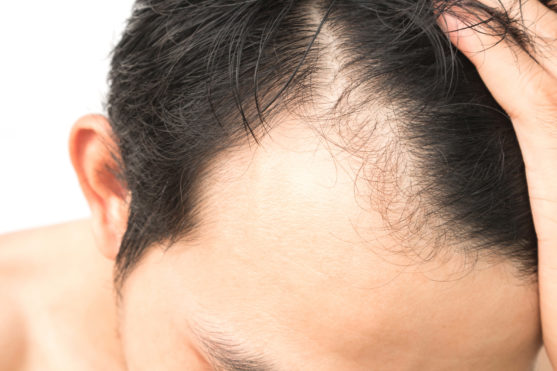
Hair Loss Treatment For Men: Hair Transplant As A Treatment For A Receding Hairline
Quick Answer: Hair transplantation is a surgical option for men experiencing a receding hairline or thinning hair. It involves moving follicles from the back or sides of the scalp into balding areas. The two main techniques are FUE (Follicular Unit Extraction) and FUT (Follicular Unit Transplantation). Results vary depending on donor hair quality, scalp condition, and post treatment care.
Causes of a Receding Hairline
- Genetics: Family history is the strongest factor.
- Hormones: Male pattern baldness is influenced by hormonal changes.
- Age: Some men notice hairline changes in their twenties, others later.
Hair Loss Solutions for Men
Options for managing hair loss include:
- Topical products such as minoxidil
- Oral medications like finasteride, prescribed by a doctor
- Surgical options such as hair transplantation, which offer longer term structural improvement
FUE vs FUT Hair Transplants
FUE (Follicular Unit Extraction):
- Follicles are removed individually
- No linear scar
- Shorter recovery time
- Suited to men who prefer short hairstyles or quicker return to activity
FUT (Follicular Unit Transplantation):
- A strip of scalp is removed and follicles harvested
- Allows many grafts in a single session
- Leaves a linear scar concealed by hair
- Longer healing time compared to FUE
Both methods can achieve natural results. The right choice depends on your goals, hair type, and donor availability.
Who is a Suitable Candidate?
You may be suitable for a transplant if you have:
- Sufficient donor hair at the back and sides
- A stable pattern of hair loss
- Clear and realistic expectations about outcomes
FAQs
Q: Is a hair transplant permanent?
A: Transplanted follicles usually continue to grow for many years. However, untreated areas may continue thinning over time.
Q: Does the procedure hurt?
A: Local anaesthetic is used. Some swelling or mild discomfort may occur during recovery.
Q: How long is recovery?
A: FUE recovery is often a few days to a week. FUT recovery typically takes about two weeks.
Q: Will it look natural?
A: When performed by experienced doctors, transplanted hair is placed to match the natural direction and density of surrounding hair.
Book a Consultation in Melbourne
Medihair offers an obligation free consultation with an AHPRA registered doctor. During this session you will receive a tailored assessment, learn whether FUE or FUT is more suitable, and have the opportunity to ask questions.
Final Thoughts
A hair transplant may provide a lasting improvement for men affected by a receding hairline. It is important to remember that outcomes vary, and success depends on donor hair quality, medical factors, and correct aftercare.
Book a Consultation
If you are considering treatment for hair loss in Melbourne, we are here to support you. The hair transplant doctors are experienced in both FUE and FUT procedures and are available to guide you through your options.
We offer an OBLIGATION FREE CONSULTATION, to discuss your goals, ask questions, and receive a clinical assessment without any pressure to proceed.
To book your appointment, call 1300 355 325 or visit our contact page.
Disclaimer: Any surgical or invasive procedure carries risks. Results vary from person to person. Before proceeding, you should seek a second opinion from an appropriately qualified health practitioner. Images used on this page are for illustrative purposes only unless otherwise specified.
AUTHOR
Bianca Shaw
A well-respected surgical stylist, Bianca Shaw has worked in the hair loss industry for 28 years, educating and supporting patients, and working alongside many of Australia’s leading surgeons. Qualified in Trichology and Hairdressing, Bianca was initially trained by a leading hair transplant surgeon and can perform a range of procedures including hair line design, placement of grafts for maximum density, and the dissection and implantation of hair follicles.
Having worked for leading hair loss companies, and managing a number of successful hair transplant practices, Bianca is committed to helping patients understand the treatment options available, ensuring they make the best decision and get the best results to improve their appearance and quality of life.
